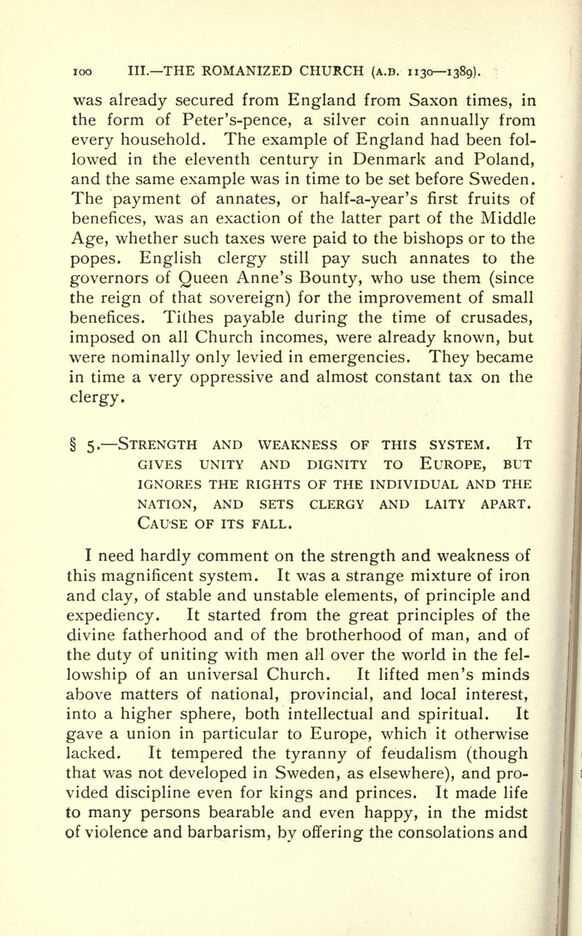
Full resolution (JPEG) - On this page / på denna sida - III. The Romanized Church under the Sverkers, Erics and Folkungar (1130—1389 A.D.)

<< prev. page << föreg. sida << >> nästa sida >> next page >>
Below is the raw OCR text
from the above scanned image.
Do you see an error? Proofread the page now!
Här nedan syns maskintolkade texten från faksimilbilden ovan.
Ser du något fel? Korrekturläs sidan nu!
This page has never been proofread. / Denna sida har aldrig korrekturlästs.
ioo III. THE ROMANIZED CHURCH (A.D. 11301389).
was already secured from England from Saxon times, in
the form of Peter s-pence, a silver coin annually from
every household. The example of England had been fol
lowed in the eleventh century in Denmark and Poland,
and the same example was in time to be set before Sweden.
The payment of annates, or half-a-year s first fruits of
benefices, was an exaction of the latter part of the Middle
Age, whether such taxes were paid to the bishops or to the
popes. English clergy still pay such annates to the
governors of Queen Anne s Bounty, who use them (since
the reign of that sovereign) for the improvement of small
benefices. Tithes payable during the time of crusades,
imposed on all Church incomes, were already known, but
were nominally only levied in emergencies. They became
in time a very oppressive and almost constant tax on the
clergy.
5. STRENGTH AND WEAKNESS OF THIS SYSTEM. IT
GIVES UNITY AND DIGNITY TO EUROPE, BUT
IGNORES THE RIGHTS OF THE INDIVIDUAL AND THE
NATION, AND SETS CLERGY AND LAITY APART.
CAUSE OF ITS FALL.
I need hardly comment on the strength and weakness of
this magnificent system. It was a strange mixture of iron
and clay, of stable and unstable elements, of principle and
expediency. It started from the great principles of the
divine fatherhood and of the brotherhood of man, and of
the duty of uniting with men all over the world in the fel
lowship of an universal Church. It lifted men s minds
above matters of national, provincial, and local interest,
into a higher sphere, both intellectual and spiritual. It
gave a union in particular to Europe, which it otherwise
lacked. It tempered the tyranny of feudalism (though
that was not developed in Sweden, as elsewhere), and pro
vided discipline even for kings and princes. It made life
to many persons bearable and even happy, in the midst
of violence and barbarism, by offering the consolations and
<< prev. page << föreg. sida << >> nästa sida >> next page >>